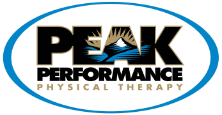Physical therapy in Baton Rouge for Knee
Q: I'm looking at having surgery done to repair (or possibly remove) the meniscus in my right knee. They think only the inside edge is damaged but we'll find out after they take a look. What kind of therapy program will I be expected to follow (if any) after surgery?
A: Your post-operative rehab program may depend on several things. First, the extent of surgery is a deciding factor. Repairing the meniscus is different from removing it. Second, each surgeon has his or her own preferences and protocols. As much as possible, rehab is based on the evidence gleaned from studies about what works for each type of tear and type of surgery (repair versus removal).
The type of surgery that is done is usually determined by the type of rupture. Tears that go all the way through the full thickness of the meniscus but are small (less than one centimeter long) can often be repaired. Ruptures located where the blood supply is poor or when the tear is too large to repair can be partially removed and the edges shaved down to smooth them out.
Patients having either procedure often end up in a rehab program after surgery. The specific protocol used can depend on whether the procedure was a repair or a partial meniscectomy. For example, the repair group may be more limited in the amount of knee motion that is allowed compared to the meniscectomy group.
There is a need to protect the healing repair site. For this reason, a brace to protect and limit knee motion is more likely for the patients who have the repair done. Patients having a partial meniscectomy have physical therapy right away. Exercises can be started without any bracing after partial meniscectomy.
Sports activities are allowed four weeks after a partial meniscectomy. The physical therapist guides the patient through weight-bearing activities that are modified according to the patient's pain levels.
Starting similar activities may not be allowed in the repair group until at least six weeks after surgery. Some surgeons limit the patient's ability to put weight on the leg for the first four weeks unless the knee is in full extension (completely straight).
During this time, the physical therapist moves the knee through passive motion (without the patient's help moving the joint). Isometric muscle contractions are allowed with the foot in contact with the floor.
More motion and activity are allowed during weeks five and six until the patient is able to return to full function during daily activities. Sports specific exercises are introduced at that time and gradually advanced until the patient can return to his or her full preinjury level of sports participation.
Reference: Thomas Stein, MD, et al. Long-Term Outcome After Arthroscopic Meniscal Repair Versus Arthroscopic Partial Meniscectomy for Traumatic Meniscal Tears. In The Journal of Sports Medicine. August 2010. Vol. 38. No. 8. Pp. 1542-1548.
Peak Performance Physical Therapy provides services for physical therapy in Baton Rouge.
